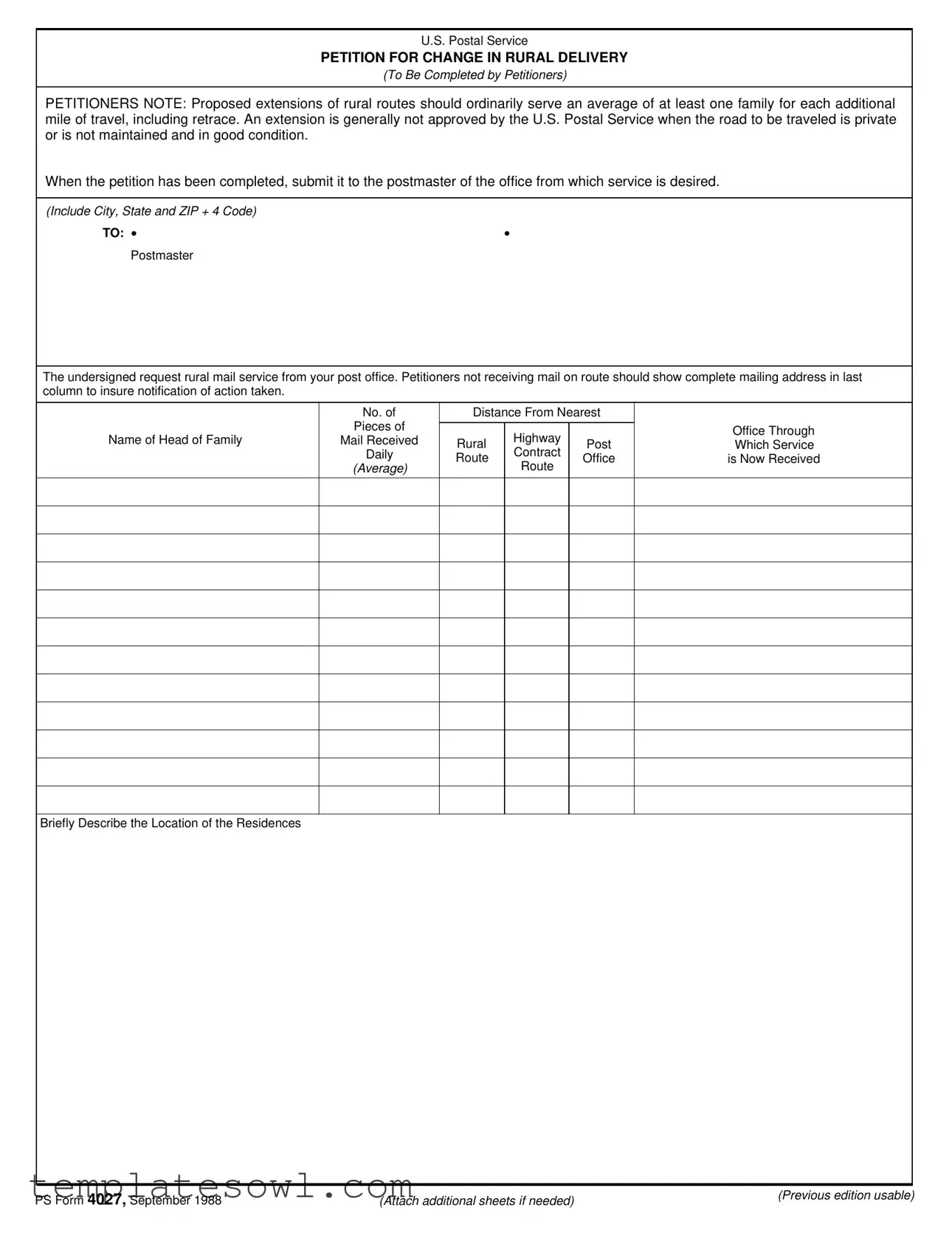What is the purpose of the PS 4027 form?
The PS 4027 form serves as a petition mechanism for individuals seeking to establish or change rural mail delivery routes. It allows residents or groups of residents to formally request the U.S. Postal Service to consider extending rural routes. This is essential for those who currently do not receive mail delivery, or for changes that may improve service. The form collects vital information, such as the number of families affected and the conditions of the roads involved, to assist postal officials in making informed decisions.
What criteria must be met for a rural route extension to be approved?
To be considered for approval, a proposed rural route extension typically should serve at least one family for every mile traveled. This means that if residents are petitioning for an extension, they must demonstrate that there are households situated along the route that will benefit from the service. Additionally, the roads involved must be in good condition and maintained. The U.S. Postal Service is less likely to approve an extension if significant portions of the route involve private, unmaintained roads.
How do I submit the PS 4027 form once completed?
Upon completion of the PS 4027 form, it should be submitted directly to the postmaster of the office from which service is desired. It’s crucial to include the specific City, State, and ZIP Code in your submission. If there is more than one proposed change or extension, each must be documented on a separate PS 4027 form. Having all relevant information, such as the number of mail pieces received daily and the overall distance from the nearest rural highway, will streamline the evaluation process.
What happens after I submit the PS 4027 form?
After submission, the postmaster will review the request and gather any necessary information. This could include assessing road conditions and checking the number of families that would be benefited or inconvenienced by the proposed change. The postmaster then completes the necessary accompanying paperwork, including the amended Form 4003, and submits everything to the Management Sectional Center for further evaluation and processing. Petitioners may not receive immediate feedback, as there can be a process of review before a decision is communicated.


